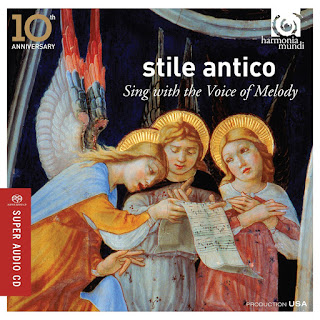 | |
| Directors & cast of Monteverdi's Il ritorno d'Ulisse in Patria, Academy of Ancient Music, at the Barbican (c) John McMunn |
Reviewed by Robert Hugill on Sep 30 2015
Star rating:
Musical values to the fore in this poetic account of Monteverdi's late masterpiece
The Academy of Ancient Music and Richard Egarr (who directed from the harpsichord), completed their trilogy of Monteverdi operas, with Monteverdi's Il ritorno d'Ulisse in patria performed in a staging by Alexander Oliver and Timothy Nelson at the Barbican Hall on Tuesday 29 September 2015. Ian Bostridge was Ulisse, Barbara Kozelj was Penelope and Elizabeth Watts was Minerva, with Andrew Tortise, Lukas Jakobski, Sophie Junker, Daniela Lehner, Alexander Oliver, Christopher Gillett, Charmian Bedford, John Lattimore, Richard Latham and Gwilym Bowen. The opera was performed full staged, with performance areas both in front or the orchestra and on a raised one behind, and much use was made of the auditorium. Most of the cast wore black with just a hint of colour.
The performance was dedicated to the memory of the great critic Andrew Porter who died in April this year at the age of 86; and not just a critic, he translated 38 opera librettos including Wagner's Ring for ENO, as well as writing perceptively on a number of other subjects. Nicholas Kenyon, director of the Barbican, hosted a pre-concert reception for those who had known and loved Andrew and his work, including a number of his former colleagues. In his speech Nicholas Kenyon said that Andrew had written perceptively about Monteverdi's opera in the early years of his stint as the music critic of the New Yorker, and that Monteverdi's opera is so admired today is partly as a result of the changes in musical taste that Andrew brought about. Kenyon also said that he had been rather taken aback by the warm of the response when Andrew died, and that it was very much an end of an era.


































%20Ali%20Wright.jpg)

%20Ali%20Wright.jpg)





